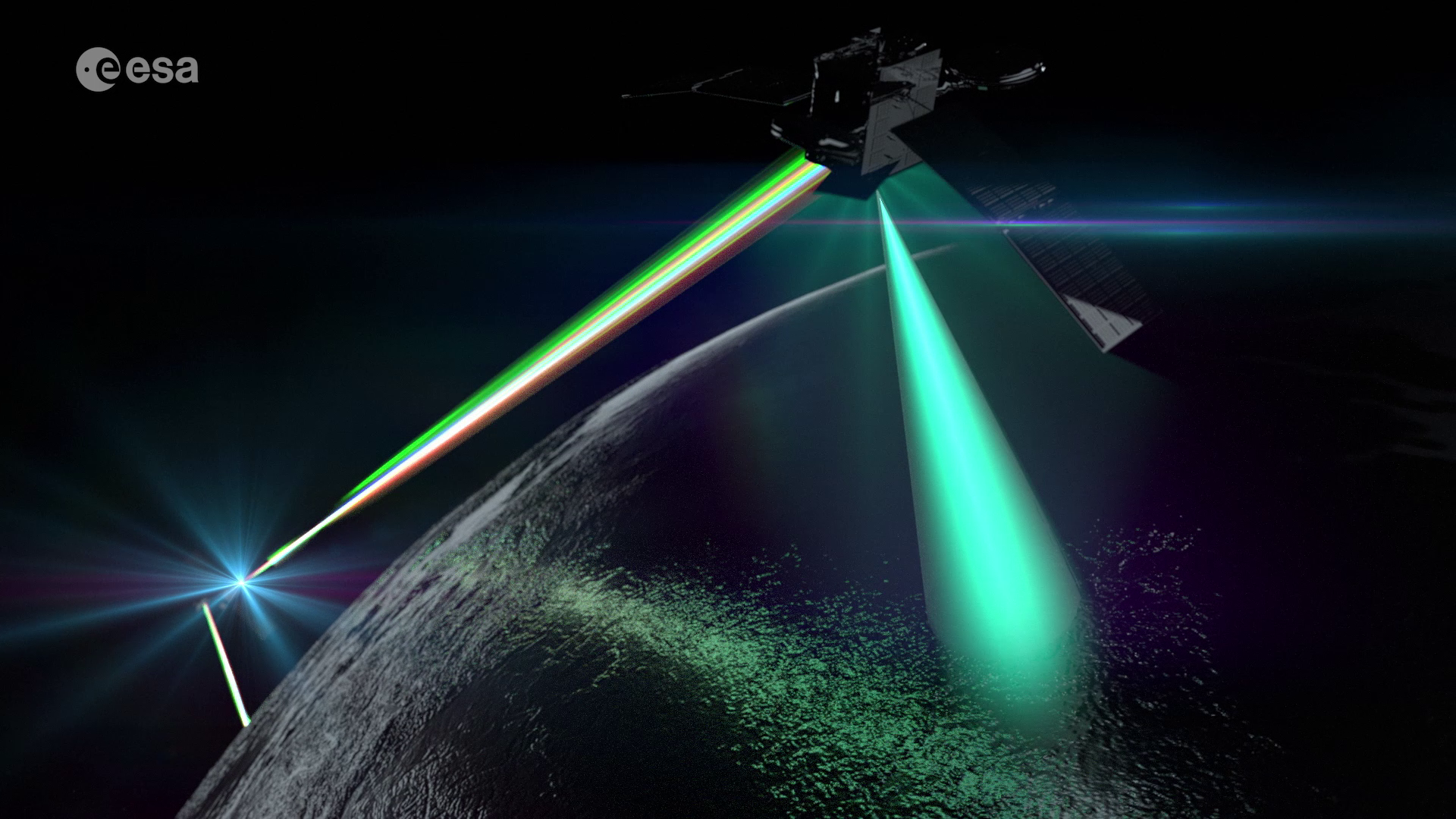Hydron: optics for faster data rates from space
When it comes to our appetite for data there really is no limit and bottlenecks can occur even on the highest capacity terrestrial networks.
ESA’s high-throughput optical network, Hydron, intends to use optical (laser-based) communications infrastructure in space to relay petabytes of data for use on Earth, even in remote areas. This will complement existing radio frequency channels to enable highly advanced telecommunications capability.
In a first step towards this vision, ESA is partnering with European and Canadian industry to build the elements of a Hydron demonstrator system with terabit per second data transmission rates integrating terrestrial and non-terrestrial networks to extend internet capabilities into space.
These capabilities will place Europe at the forefront of optical telecommunications. The technical know-how for this will be built with the support of ESA’s Scylight programme.
This meets ESA’s goals to strengthen Europe’s use of space and security and supports commercialisation, as described in ESA’s Agenda 2025.
Why build Hydron?
By 2030, data demand is predicted to increase by an average of about 500%, while the cost per bit of data delivered will drop by over 70%. Where exactly these numbers will be is not yet clear, but today’s technology cannot meet tomorrow's demand. In addition, a network is usually not built as a simple data relay with point-to-point connections, but requires similar flexibility to that we have come to enjoy from terrestrial networks.
Meeting an increased future demand for bandwidth can best be achieved by complementing the stretched radio frequency satellite network with optical communication technology.
This will require commercial and strategic investment in geostationary Earth orbit satellites and low Earth orbit constellations with optical communications and on-board routing technologies.
Optical communication technologies have the potential to reduce the bottlenecks created by traditional radio frequency systems which are competing for already crowded radio frequency spectra and are subject to heavy regulation.
Most major commercial satcom systems have adopted optical intersatellite links to move vast amounts of data in orbit around the world. The first operational service provided by a satellite relay system was the Space Data Highway (EDRS), which has demonstrated around 82 000* inter-satellite optical links at speeds of up to 2 Gbit/s in orbit, sometimes covering distances of around 39 000 - 43 000 km. Commercial operators, such as SpaceX, have also embraced optical inter-satellite links and report upwards of multiple thousand of laser links per day in their proprietary networks.
Part of ESA’s Hydron vision is that future telecom satellites will seamlessly integrate with global terrestrial high-capacity networks. Today, this integration via optical up- or down links through the atmosphere is a key step to connect satellites as an extension of the terrestrial systems into space. Doing so, new non-terrestrial networks can achieve large coverage, improve latency and lower connection costs even to the most remote areas on Earth – or even space.
About Hydron
Hydron will comprise a fully optical network of high-capacity optical inter-satellite links and optical ground-satellite links which interconnect space assets with each other and with ground networks, and seamlessly extend terrestrial optical transport networks into space.

The Hydron Demonstration System (Hydron-DS) is an early-bird demonstration to prepare the way for the first terabit/sec capacity optical satellite network. It comprises a space segment in low Earth and Geostationary orbit; a core network of ground stations; and a control centre operating all space and ground assets, planning user requests, optimising the use of all network resources, and ensuring seamless inter-operability with high-capacity terrestrial networks.
European and Canadian terrestrial network operators, telecom service providers and satellite operators will obtain access to the Hydron-DS enabling them to test technological and commercial scenarios.
Institutional, scientific, and commercial users will also gain access to an initial service demonstration to showcase core capabilities.
Industry implementation of the Hydron Demonstration System
Kepler Communications in Canada and Thales Alenia Space in Italy proposed initial implementation plans for two different aspects of the Hydron-DS. These proposals will be included in an ESA Request for Proposals process that will end by July 2024.
Kepler Communications will lead, and partly fund, an industrial team of partners from Canada, Germany, Netherlands and Switzerland.
After successful completion of the technology demonstration goals of the Hydron-DS during the in-orbit demonstration phase, Kepler Communications is committed to the commercial exploitation of a ‘low Earth orbit Ring Layer’ of the Hydron-DS to provide high-capacity data transport and network services via low Earth orbit.
During the in-orbit demonstration phase, which will last a minimum two years, Kepler Communications intends to start service provision to commercial customers, but at the same time allow the use of available capacity by the Hydron project.
*Figure correct as of May 2024.















 Germany
Germany
 Austria
Austria
 Belgium
Belgium
 Denmark
Denmark
 Spain
Spain
 Estonia
Estonia
 Finland
Finland
 France
France
 Greece
Greece
 Hungary
Hungary
 Ireland
Ireland
 Italy
Italy
 Luxembourg
Luxembourg
 Norway
Norway
 The Netherlands
The Netherlands
 Poland
Poland
 Portugal
Portugal
 Czechia
Czechia
 Romania
Romania
 United Kingdom
United Kingdom
 Slovenia
Slovenia
 Sweden
Sweden
 Switzerland
Switzerland

























